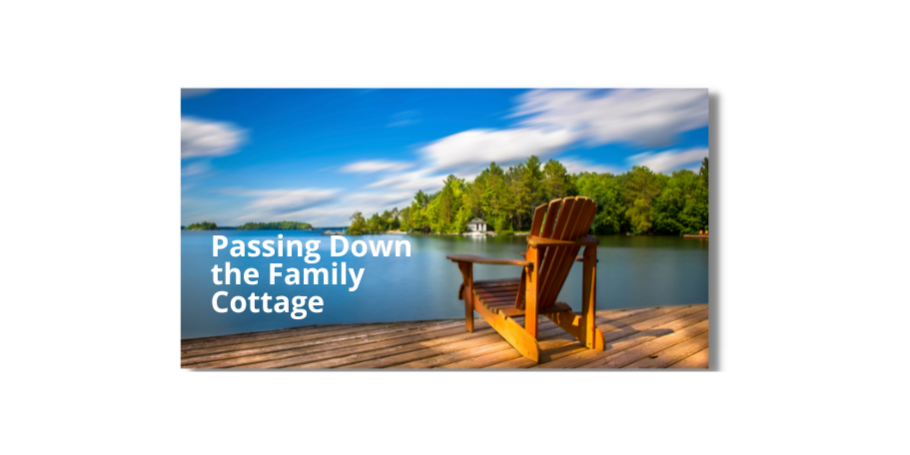by Jan S. Grimm, CFP®, Senior Wealth Advisor
The past couple of years has taught us that life’s uncertainties can happen quickly, and often before we have had a chance to plan for them. While the idea of an estate plan may seem daunting, it’s always better to have a plan in place. A family cottage, vacation property, cabin or whatever name the family members call it (the “family cottage”) can be a treasured source of memories and multi-generational enjoyment. However, failing to plan for the transition of the family cottage for future generations can lead to bitter disagreement and undue financial burden. Wealth transfers that include valuable and beloved property carry with it complicated emotional and financial factors. It’s helpful to consider a process that may help to avoid family discord down the road.
Before a plan to transfer the family cottage to the next generation can be implemented, the family needs to reach a consensus as to their goals for the property. In my experience, a plan imposed by a senior generation upon the junior generations is almost always doomed to fail. The most successful plans require detailed and thoughtful advanced planning involving both generations. The process of coming to an agreement is usually accomplished with a series of family meetings and often most successful when using a facilitator. The use of a facilitator or neutral third party is highly beneficial in identifying areas of consensus and resolving areas of dispute.
A well-laid estate plan is essential
The best plans should identify:
- Who gets the use of the family cottage and when;
- Who is responsible for the general maintenance of the cottage and who contributes money to take care of ongoing maintenance;
- How capital improvements are handled (i.e., renovations, driveways and access roads, replacement of aging structures);
- What is the process for disagreements regarding paying for expenditures;
- What is the process to sell an interest, to determine value and the type of transfers allowable; and
- What can be done to limit exposure to liabilities (e.g., injuries on the property, creditors, or divorce).
Often the owners will choose the least expensive and easiest method to add members of the next generation such as joint owners with rights of survivorship, Tenants in Common or completely transferring the property to the next generation by deed. Although easy to implement, these types of transfers often have unintended consequences and may not avoid the issues discussed above and they offer little or no protection from creditor claims and divorce.
Trust Agreements are common estate plans but often too vague
Another common vehicle for passing along the cottage property is a trust agreement. In this scenario, the Grantor (owner/parents) designs the terms the beneficiaries must abide by when the property passes to them. This can be a successful method of transfer but the devil here is in the details. Based on the level of details provided in the trust, the transfer can be vague and not cover the matters that eventually sow confusion and discord, or irrevocable and provide little flexibility. This latter point can be very cumbersome for dispute resolution, especially when the different beneficiaries have varying degrees of financial resources.
LLCs allow for planning flexibility
The use of a Limited Liability Corporation (LLC) offers a great deal of planning flexibility and can be used in conjunction with a direct transfer or a trust. The LLC Agreement can specifically spell out the rules and procedures for the use and operation of the property and will often have more favorable tax treatment than a trust. This is especially true if the cottage generates income or if the senior generation intends to fund the LLC with a substantial endowment to maintain the property.
In any scenario, it’s critical to craft a plan to pass along your family property that avoids conflicts, protects parties from creditors and preserves the property for future generations. Consulting with an experienced Trust and Estate Planning Attorney is a worthwhile first step.
Disclosures
Opinions expressed are those of the author and do not represent individual advice or recommendation. Readers should consult with legal professionals in designing their estate plan. Jan S Grimm and Riverwater Partners do not receive compensation or referral fees from legal parties for engaging in estate planning recommendations.
The Certified Financial Planner Board of Standards, Inc. (CFP Board) owns the CFP® certification mark, the CERTIFIED FINANCIAL PLANNER™ certification mark, and the CFP® logo in the United States, which it authorizes use of by individuals who successfully complete CFP Board’s initial and ongoing certification requirements.









